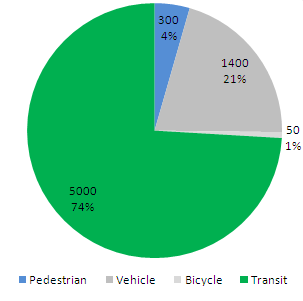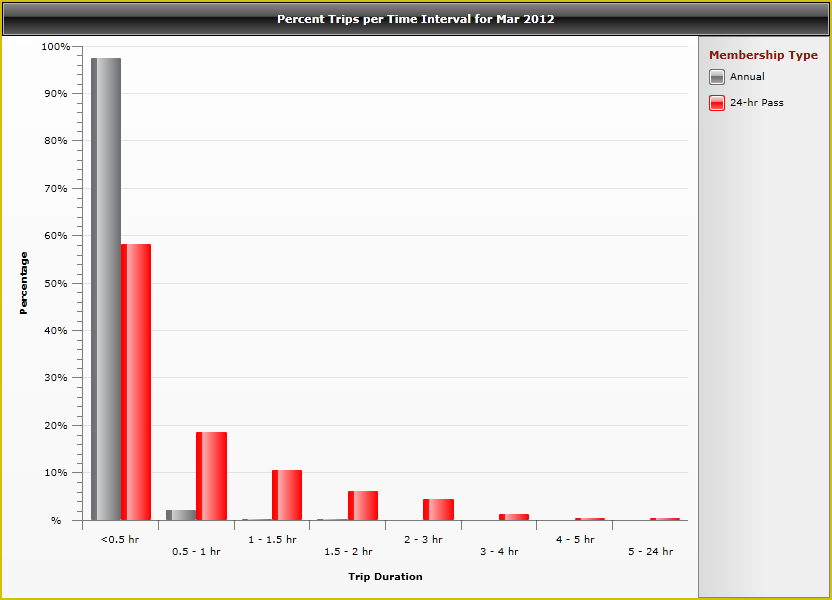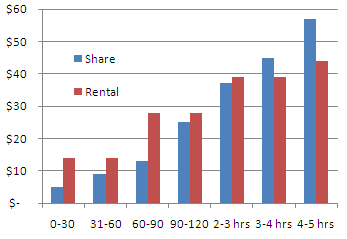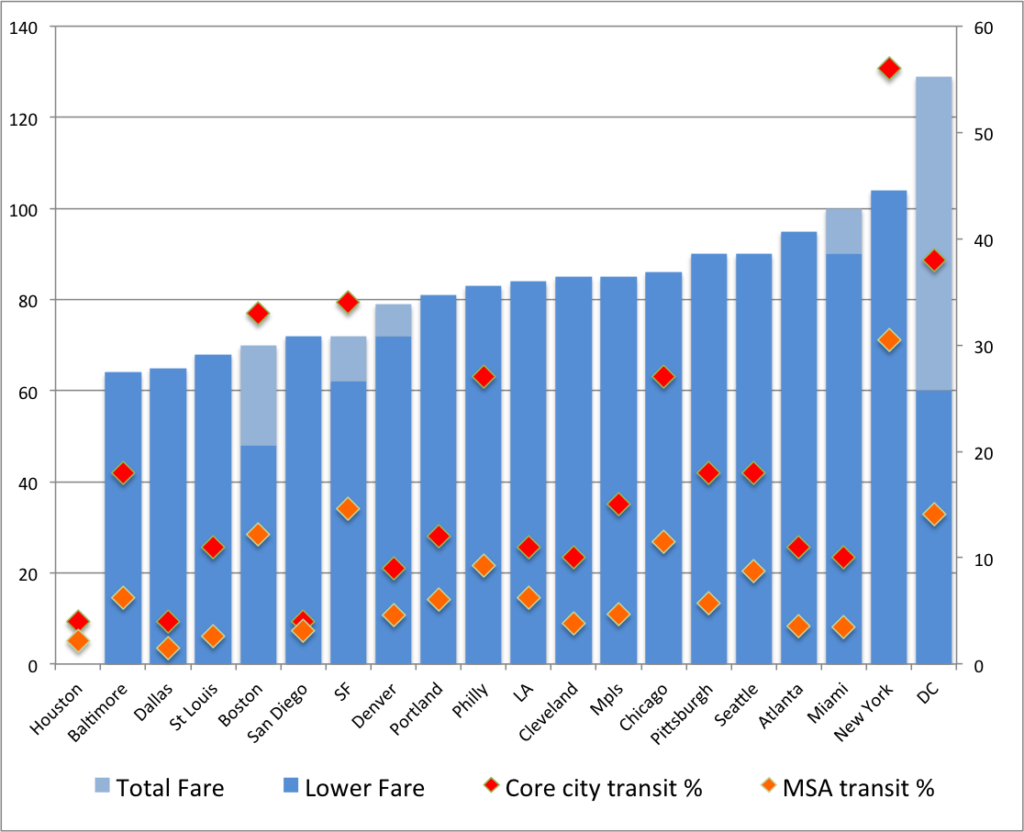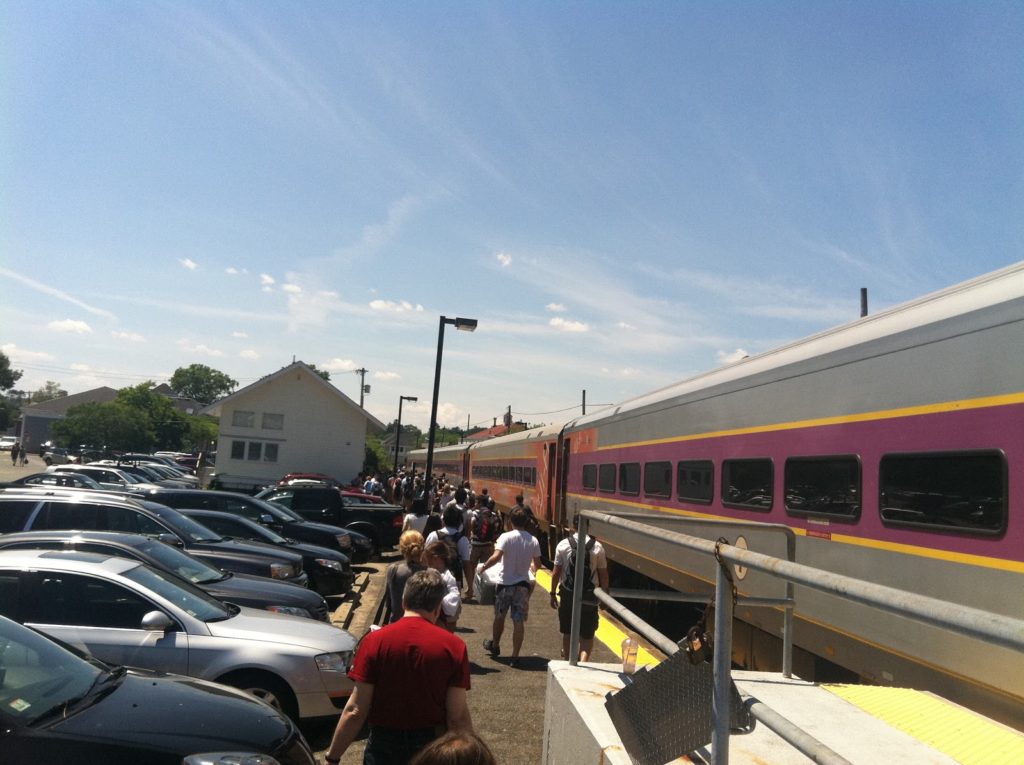When I bike to work, my route is simple. I head down Main Street in Cambridge, cross the Longfellow Bridge, and take a right on to Charles Street. I go diagonally across Beacon Street on to the Common, bike down the wide bike path there, and then bike half a block (or, if I’m on a Hubway, a whole block), slowly, down a sidewalk to the office. It’s simple, relatively safe and even pretty fast.
On the way home, I don’t even bother to try the reverse. It is damn near impossible to get from the Chinatown/Theater District/Park Square area to the Longfellow Bridge, and the options are dangerous and annoying enough that I wind up on the Commonwealth Avenue bike lanes to the Harvard Bridge to Cambridge, a less direct, but much safer route. As such the inbound and outbound portions of my ride are, except for half a block of Mass Ave in Cambridge, completely different.
But what about when I have to go to Kendall? There are several options for getting to the Longfellow, each of which has some major bikeability issue. The main issue is that Charles Street is one way, with no provision for cyclists going northbound. It’s sidewalks are narrow and riding contraflow is a death wish (oh, and it’s illegal). Beacon Hill—the neighborhood it traverses—is comprised of one-lane, one-way roads, and they have been signed in such a way as to prohibit through traffic, which is sensible since it was laid out way, way before cars were invented. This would be fine, but there is no parallel to Charles Street. To the east is Storrow Drive. To the west is Beacon Hill. There’s no good way to get the third of a mile from the Common to Charles Circle.
I’ve gone through the options (none of them good) and rated each from 1-5 for three categories: bike-car safety (how safe is it in spaces shared with cars?), bike-ped safety (how safe is it on spaces shared with pedestrians?) and bikeability (is it really annoying to bike?):
The Storrow double-cross is what you get if you ask Google Maps. It’s a pretty bad suggestion. The two crossings are coded as bike lanes, and while they do provide traffic-free crossings of Storrow Drive, neither is bike friendly, at all. To get to the bridges, you first have to cross four lanes of traffic on Charles Street, without the benefit of lights, unless you dismount and use crosswalks at the corner of Charles and Beacon. The path on the north side of the Public Garden is not bikeable. I call this the Beacon Weave. It’s not much fun on a bike.
And all that does is get you to the bridges. The first crossing (1) is the Fiedler Bridge near the Hatch Shell. To gain altitude, it has two hairpin turns on each approach, the bottom of which is completely blind. Biking at a walking pace, or walking altogether, is necessary going up and down this bridge, which often has heavy foot traffic. Assuming you navigate that bridge, you get a couple hundred yards of easy riding before you have to navigate another double-hairpin bridge (2) to get back across Storrow. This one is less blind than the Fiedler, but it’s narrower and just as trafficked. Even then, that only gets you to the far side of Charles Circle, where you have to jockey in traffic turning off of the Longfellow and on to Storrow before you can get to the bike-laned regions on the bridge itself. This require four separate crosswalks or some creative light-running.
This route would be a bit more doable if there were a path from the river bike path to the Longfellow. But there’s not. It’s pretty nasty.
Verdict:
Bike-car safety: 3
Bike-ped safety: 1
Bikeability: 0
Grand total: 4
The Beacon Hill Stumble-Bumble is probably the most direct route, but it fails for a variety of reasons. Mainly, it involves going down several one-way streets the wrong way, which causes Google Maps to say things like “walk your bike” in the directions more than once. Plus, these streets are steep, narrow and have blind corners. It might be fun if you are a bike messenger, but if you value your life, it’s a pretty bad option. If a car comes the other direction, there is not enough room to pass with any degree of comfort and safety. And the streets are designed to not let you through, so if you don’t know your way, you’ll wind up lost and spit out on to Charles, Beacon or Cambridge Street anyway.
Verdict:
Bike-car safety: 1
Bike-ped safety: 2
Bikeability: 0
Grand Total: 4
The Beacon Hill Crossover is another Google Maps suggestion, and it’s slightly better than the first. It has you cut across the Common (or you can go around on Beacon), climb Beacon Hill, and descend on Bowdoin Street. That part of the route, aside from the hill climb, is not too bad. Then you hit Cambridge Street. Outside of rush hour, this isn’t that bad. During rush hour, this backs up off of Storrow Drive, and to get to the Longfellow you have to slalom slow-moving cars, and then get through the intersection at Storrow. There, it behooves you to find the left-most lane, because most of the traffic is turning right on to Storrow with no idea that a bicyclist might be going straight. Charles Circle is bike no-man’s-land (no-bike’s-land?) and it is several heartbeats before you are in the relative safety of the bike lane on the bridge. Oh, and there are always hordes of pedestrians running across Charles Circle to get to the T stop. A variant of this route via the less-hilly but longer and more-pedestrian-mall Downtown Crossing, which scores similarly, is shown as well.
Verdict:
Bike-car safety: 1
Bike-ped safety: 1
Bikeability: 3
Grand Total: 5
The Storrow Shortcut is the route I actually use. It isn’t pretty, but it certainly gets the job done. The main issue is that it requires either biking a narrow, decaying sidewalk along Storrow Drive or, more comfortably, actually biking down Storrow Drive itself! Google doesn’t realize that Storrow is not officially closed to bikes, and that there is a sidewalk along that route, so I can only show this route in driving directions. And, no, it’s not as crazy as it sounds.
On the few hundred yards of Storrow I bike, the road is three lanes wide and it has a narrow-but-painted shoulder line. It’s definitely better than the rutted-and-cracked sidewalk. Traffic is usually very slow there in the afternoon, and I can usually glide past the gridlock for the couple of blocks up towards the T stop. Once there, I hop on to the sidewalk and the unused part of Embankment Road and then under the bridge before hooking a left towards Cambridge. It avoids one-ways the wrong way, it misses the thick of the pedestrians, and it requires a minimum amount of weaving through traffic (but doesn’t miss the Beacon Street Weave). It’s ugly, but it works.
Verdict:
Bike-car safety: 1
Bike-ped safety: 4
Bikeability: 2
Grand Total: 7
All of this, of course, could be solved with a two-way cycle track on Charles. This has been proposed, but has not seen any steps taken towards actual construction. Charles is three lanes of traffic and parking on both sides. Its shops are mostly pedestrian-oriented, and it probably doesn’t need this parking, but taking it out would cause an uproar. However, the street would, and should, function perfectly well with two lanes. And such a lane would funnel Cambridge-bound traffic from the Back Bay across the Theater District and Chinatown to the Financial District and even the Seaport. It would be well used.


